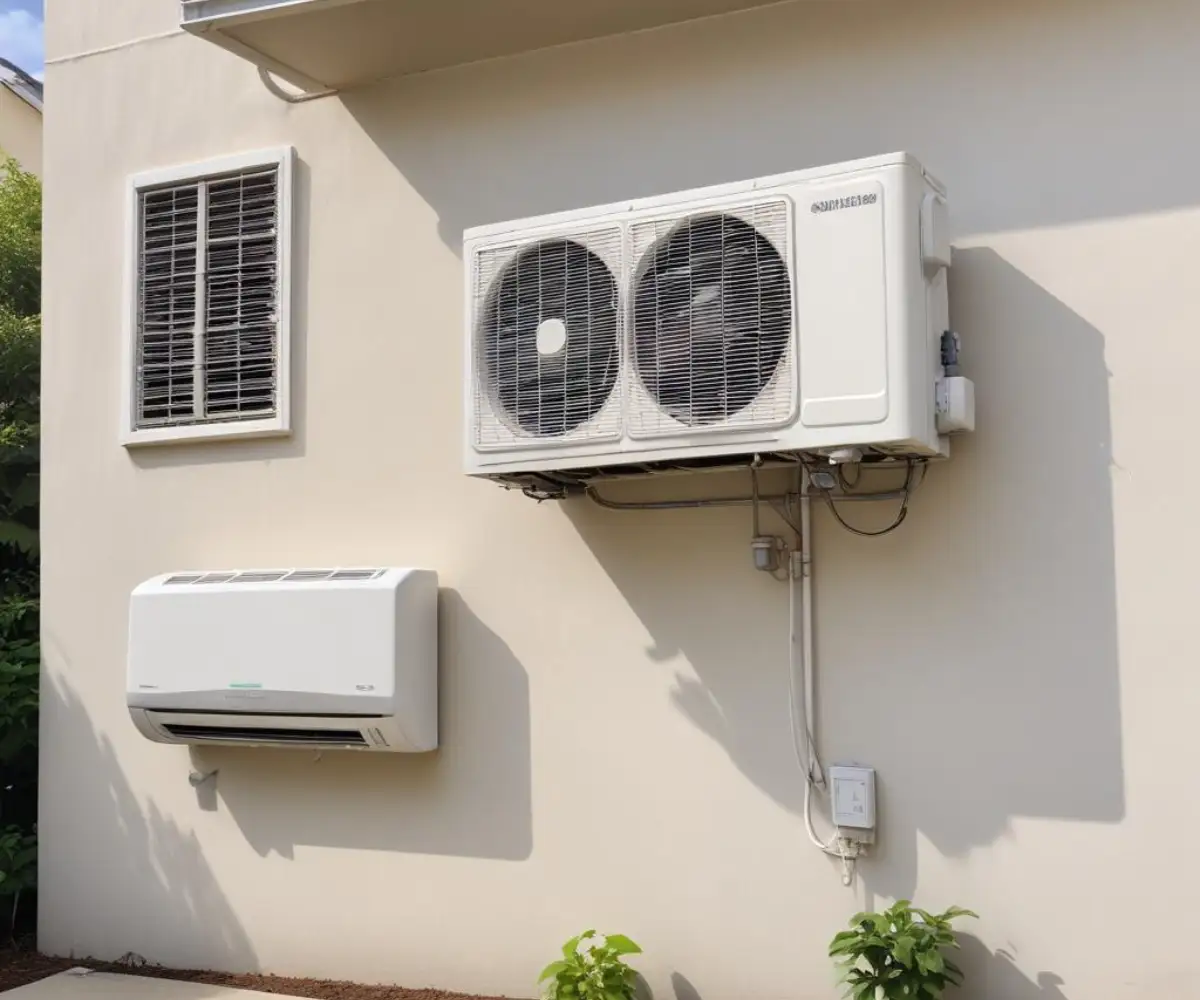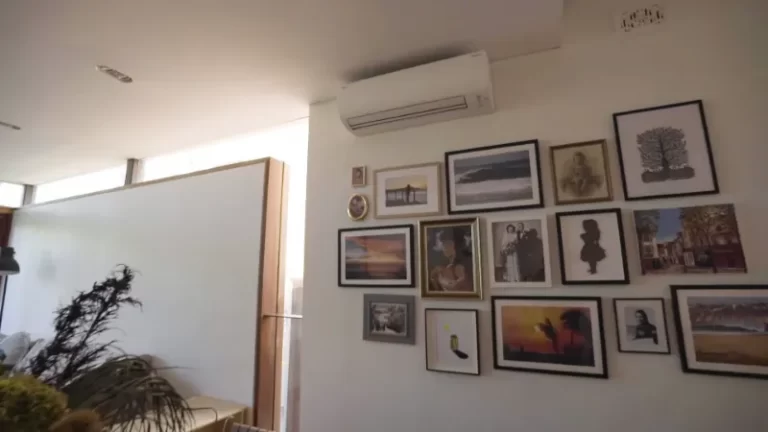Replace Central AC with Mini Split? Your Wallet Will Thank You
Is your old central air conditioner struggling to keep up? Are you tired of skyrocketing energy bills and rooms that are never quite the right temperature? You’re not alone. Many homeowners are stuck with aging, inefficient central AC systems that just don’t cut it anymore.
These traditional systems often come with a host of problems. They can be incredibly expensive to run, suffer from leaky and dirty ductwork, and provide inconsistent cooling throughout your home. This leads to frustrating “hot spots” and a constant battle with the thermostat.
But what if there was a smarter, more efficient way to cool your home? Enter the ductless mini-split system. This modern technology offers a powerful, flexible, and cost-effective alternative to traditional central air, and making the switch could be one of the best upgrades you make for your home’s comfort and your budget.
You'll Learn About
What’s Wrong With Your Old Central AC?
For decades, central air conditioning has been the standard for whole-home cooling. However, these systems are far from perfect. Understanding their weaknesses is the first step toward finding a better solution.
Many of the problems with central air stem from the extensive network of ducts required to distribute cool air. Over time, this ductwork can leak, become disconnected, or accumulate dust, pollen, and other allergens, leading to significant energy loss and poor indoor air quality. In fact, leaky ducts can account for more than 30% of your cooling energy loss.
The Problem with Ducts and Single-Zone Cooling
A central AC system operates on an “all or nothing” principle. It cools the entire house to a single temperature set by one thermostat. This is incredibly inefficient if you only spend time in a few rooms, as you’re paying to cool empty spaces.
Furthermore, issues like refrigerant leaks, dirty coils, and clogged filters plague older systems, drastically reducing their efficiency and leading to costly repairs. If your unit is constantly running, making strange noises, or failing to cool your home properly, it’s a clear sign that it’s time for an upgrade.
The Modern Solution: Ductless Mini-Splits Explained
A ductless mini-split system is a highly efficient and flexible alternative to central air. It consists of two main components: an outdoor compressor/condenser and one or more indoor air-handling units. These units are connected by a small conduit containing power cables and refrigerant lines, eliminating the need for bulky and inefficient ductwork.
Each indoor unit, often mounted high on a wall or ceiling, can be controlled independently. This creates separate “zones” of cooling in your home, allowing you to set different temperatures in different rooms. This zoned comfort control is a game-changer for both comfort and energy savings.
Unbeatable Efficiency and Quiet Operation
Mini-splits are renowned for their energy efficiency. They use advanced inverter technology that allows the compressor to adjust its speed, using only the precise amount of energy needed to cool a space. This results in significantly lower electricity bills compared to the constant on/off cycling of traditional AC units.
Because the loudest components are located outside and there’s no noisy ductwork, mini-split systems operate almost silently. This makes them an excellent choice for bedrooms, home offices, and any other space where peace and quiet are a priority.
Central Air vs. Mini-Split: A Head-to-Head Comparison
Deciding whether to replace your central AC with a mini-split system requires a clear understanding of how they stack up in key areas. From installation and cost to long-term performance, the differences are significant.
Let’s break down the most important factors to consider when choosing between these two cooling technologies. This will help you determine which system is the best fit for your home, budget, and lifestyle.
Energy Efficiency and Your Utility Bills
When it comes to efficiency, there is no contest. Mini-splits are significantly more energy-efficient than central air systems. The primary reason is the elimination of energy loss through ductwork. Central air systems can lose a substantial amount of cooled air through leaks and poor insulation in the ducts.
Ductless systems deliver cool air directly into the room, ensuring all the energy is used effectively. Their high SEER (Seasonal Energy Efficiency Ratio) ratings, which can exceed 30, far surpass those of even high-efficiency central units. This superior efficiency translates directly into lower monthly energy bills, often saving homeowners up to 30% on cooling costs.
Installation: Simplicity vs. Complexity
The installation process for a mini-split is far less invasive than for central air. Since there is no need for ductwork, installation typically only requires a small three-inch hole in the wall to connect the indoor and outdoor units. This makes the process faster, cleaner, and often cheaper, especially in homes without existing ducts.
Installing a new central air system, particularly in a home that lacks ductwork, is a major construction project. It involves cutting large holes in walls, ceilings, and floors to run the ducts, which is disruptive and costly. Even in homes with existing ductwork, modifications or repairs may be necessary, adding to the expense.

Upfront Cost and Long-Term Value
The upfront cost to install a mini-split system can sometimes be higher than replacing a central air unit if your home already has usable ductwork. However, for homes needing new ductwork, a multi-zone mini-split system is often the more affordable option. A single-zone mini-split can cost between $2,000 and $8,000, while a whole-home, multi-zone system can range from $10,000 to over $18,000.
While the initial investment might seem steep, the long-term savings on energy bills can provide a significant return. Additionally, many states and utility companies offer rebates and tax credits for installing high-efficiency heat pump mini-splits, which can further offset the cost. It’s a smart investment that pays for itself over time.
Making the Switch: A Step-by-Step Guide
Transitioning from a central AC unit to a ductless mini-split system is a straightforward process when handled by qualified professionals. Understanding the steps involved can help you prepare for the installation and ensure a smooth experience.
From the initial consultation to the final walkthrough, each stage is designed to provide you with a customized and efficient cooling solution. Here’s what you can typically expect during the replacement process.
1. Consultation and System Sizing
The first step is to have a professional HVAC contractor assess your home. They will calculate the cooling load for each room you want to condition to determine the appropriate size and number of indoor units needed. This is a crucial step to ensure the system operates efficiently and effectively.
During the consultation, you will also discuss the best placement for both the indoor air handlers and the outdoor condenser. The goal is to optimize airflow and aesthetics while ensuring easy access for future maintenance.
2. Removing the Old System
Once the plan is in place, the installation team will safely decommission and remove your old central air conditioning system. This includes the outdoor condenser and the indoor air handler or furnace coil. If you plan to abandon the existing ductwork, they will seal off the vents.
Proper disposal of the old equipment, especially the refrigerant, is essential and must be handled by certified technicians to comply with environmental regulations.
3. Installation and Setup
The installation of the mini-split system begins with mounting the indoor units in the designated locations. A small hole is then drilled through the exterior wall to run the conduit connecting the indoor and outdoor components. The outdoor condenser is placed on a stable, level pad outside.
After connecting the refrigerant lines and electrical wiring, the system is charged with refrigerant and thoroughly tested. The technician will then show you how to operate the system, including the remote controls for each zone, and answer any questions you may have.
Weighing Your Options: Pros and Cons
Like any major home upgrade, switching to a ductless mini-split system has both advantages and potential drawbacks. A balanced view will help you make an informed decision that aligns with your priorities and home’s needs.
| Feature | Ductless Mini-Split | Central Air Conditioning |
|---|---|---|
| Energy Efficiency | Very High (SEER ratings can exceed 30) | Moderate to High (Energy lost in ductwork) |
| Zoning Control | Excellent (Individual room temperature control) | Poor (Single thermostat for the whole house) |
| Upfront Cost | Higher for whole-home systems | Lower if ductwork is already in place |
| Installation | Minimally invasive, no ducts needed | Complex and disruptive, requires ductwork |
| Operating Noise | Very Quiet | Moderately Noisy (Air handler and duct noise) |
| Air Quality | Good (Multi-stage filtration in each unit) | Can be poor due to dirty ducts |
| Aesthetics | Indoor units are visible on walls/ceilings | Vents are less obtrusive, but system is hidden |
Why You Will Love Your New Mini-Split
The benefits of making the switch are compelling. Superior energy efficiency leads to substantial savings on your utility bills. The ability to create personalized comfort zones means an end to family arguments over the thermostat.
You’ll also enjoy whisper-quiet operation and improved indoor air quality, thanks to multi-stage filtration that captures dust, pollen, and other allergens. And for homes that need heating as well, heat pump mini-splits offer an incredibly efficient solution for year-round comfort. This is a far more advanced option than older systems, which is something to consider if you’re wondering, should I buy a house with base-board heating?
What to Keep in Mind
While the advantages are numerous, there are a few considerations. The initial installation cost can be higher than a direct replacement of a central AC unit, especially for multi-zone systems. Some homeowners also dislike the appearance of the indoor units, though modern designs are becoming sleeker and less obtrusive.
Finally, regular maintenance is key to keeping the system running efficiently. This includes cleaning the filters on each indoor unit monthly, which is a simple task but one that must be done consistently. Keeping the area around the outdoor unit clean is also important, a task made easier if you know how to turn off blower on shop vac to clear away leaves and debris.
The Final Verdict: Is It Time for an Upgrade?
If your central air conditioner is over 10 years old, requires frequent repairs, or is responsible for shockingly high energy bills, the answer is a resounding yes. Replacing it with a ductless mini-split system is a smart, forward-thinking investment in your home’s comfort and efficiency.
The move away from inefficient, leaky ductwork toward precise, zoned cooling represents a major leap in HVAC technology. It puts control back in your hands, allowing you to cool your home intelligently and save a significant amount of money in the process. When considering your overall home comfort and aesthetic, even details like your entertainment setup matter; a sleek mini-split can complement a modern living space, just as knowing the right placement for your soundbar above fireplace completes a media room.
While the upfront cost is a factor, the long-term benefits of reduced energy consumption, personalized comfort, quiet operation, and improved air quality make switching to a mini-split an easy decision for many homeowners. It’s not just a replacement; it’s an upgrade to a better way of living.

